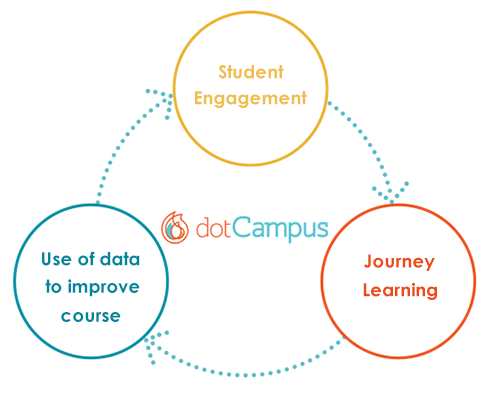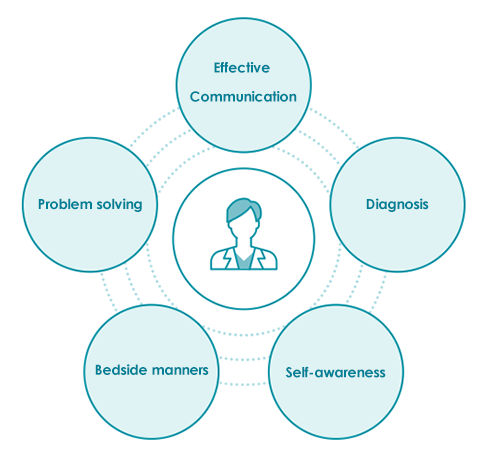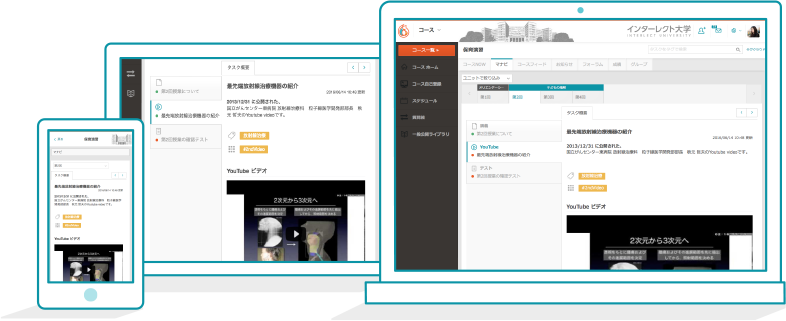Concept and Vision
Journey Learning
The need for a new learning style
Japanese society is in need of students who graduate with the skills and aptitudes required to become knowledge workers. The age of the salary man is a thing of the past . Today problem solving, critical thinking, creativity and the ability to work well in a collaborative environment are key. The age when companies offered years of on-the-job training is over, which challenges universities to evolve and change.

[Journey learning] as we define it is the concerted effort across the curriculum to make each course, each semester an opportunity for skills and personal growth. The graduation certificate is awarded at the end of this process- but should not be the ultimate objective. Japanese society has great need of students who have experienced Journey Learning and stand ready for work in the knowledge economy.
3 defining traits of Journey Learning
- Active learning
- Use of Competencies
- Autonomous learning

Student Engagement
An interactive learning environment that spurs engagement and motivation
Journey Learning
An approach to learning that puts the focus on skills and personal growth
Use of data to improve courses
dotcampus provides data on course learning that aids instructors as they seek to improve outcomes
dotCampus vision
Multiply the dots, Connect the dots, Draw a picture of the future
dotCampus supports the student journey: learning -> understanding -> planning a professional future

Multiply the dots
[dotCampus] creates a richer learning environment by increasing the breadth and quality of learning materials available to students. Plentiful opportunities for collaboration and communication motivates and prepares students for the knowledge economy.

Connect the dots
Real, usable workplace skills in a domain is the result of students’ active participation in inventing, creating and building themselves. [dotCampus] enables instructors to increase the frequency of Active Learning activities to deepen understanding, teach critical thinking and involve the students in problem solving exercises that lead to mastery.

Draw a picture of the future
The best university education does not only impart skills and knowledge but facilitates students’ thinking about their professional future. Understanding one’s own strengths and weaknesses to avoid mismatch in the job market may be nearly as important as class learning. [dotCampus] gives students the tools needed to reflect on their own “picture of the future” within the context of class learning.
Modern design
Easy to use design that adapts to all devices
Above all we believe in creating a UI that is intuitive and easy to use for instructors and student alike. That’s how we can get everyone aboard. Two factors sets the new dotcampus UI apart from other LMS’es.
Competencies
Towards a more structured curriculum
dotCampus puts [Competencies] at the center of the LMS. This helps students see the connections between courses and provides meaningful signposts about learning content.
dotCampus competency maps provides a common vocabulary for defining skills, knowledge, and attitudes that learners will acquire as they participate in courses, learning activities or extracurricular activities. Competencies are an inventory of skills and knowledge, rather than a measures of how good learners are at something.
Competencies go hand-in-hand with student-centered learning because clearly defined competencies provide students with clarity on which area of the curriculum they need to focus on to improve their performance.
An example of 5 core competencies

Merits of using competencies

For school, competencies
- clarifies existing curriculum content and enables deliberations about improvements
- enables alignment of curricula with school mission and the needs of society
- enables the school to better advice students on career choices

For instructors, competencies
- facilitate instructor-instructor communication regarding class dependencies
- facilitate timely, differentiated student feedback

For students, competencies
- provide clarity on strengths and weaknesses
- provides pointers as to what kind of career they may be suited for

